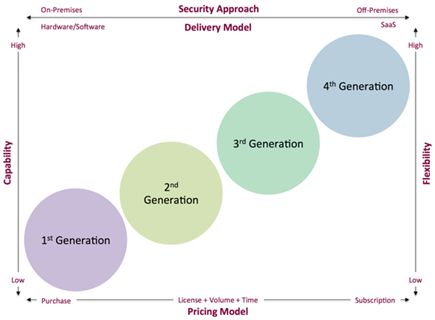2015 eDiscovery Case Law Year in Review, Part 2

As we noted yesterday, eDiscovery Daily published 89 posts related to eDiscovery case decisions and activities over the past year, covering 72 unique cases! Yesterday, we looked back at cases related to admissibility and proportionality, production format disputes and (once again) the ubiquitous Apple v. Samsung case. Today, let’s take a look back at cases related to disputes about discovery, eDiscovery cost reimbursement and issues related to privilege and confidentiality assertions.
We grouped those cases into common subject themes and will review them over the next few posts. Perhaps you missed some of these? Now is your chance to catch up!
DISPUTES ABOUT DISCOVERY
Last year, we covered cases where parties requested discovery on their opponent’s discovery process. Those, and other general disputes about the discovery process – including requesting 30(b)6) depositions and a notable dispute about whether contract attorneys should receive overtime pay – are included in this category.
Calling First 30(b)(6) Witness a “Waste of Time”, Court Orders a Second Deposition: In Rembert v. Cheverko et. al., New York District Judge Katherine B. Forrest granted the plaintiff’s motion “in its entirety” to compel the defendants to provide a properly prepared 30(b)(6) witness to testify regarding the defendants’ preservation and production of emails, to provide copies of document retention/preservation notices issued and to reimburse plaintiff’s costs and fees associated with having to conduct an additional deposition.
Court Acknowledges Lack of Expertise to Recommend Search Methodology, Orders Parties to Confer: In ACI Worldwide Corp. v. MasterCard Technologies, LLC and MasterCard International, Inc., Nebraska Magistrate Judge F.A. Gossett, acknowledging that the Court “simply does not have the expertise necessary to determine the best methodology to be employed in retrieving the requested materials in a safe, non-obtrusive, and cost-effective manner”, ordered the parties to “once again” confer in an effort to reach an agreement regarding the search methodology to be employed by the defendants in retrieving the information requested by the plaintiff.
Court Agrees with Plaintiffs, Orders Provision for Qualitative Sampling of Disputed Search Terms: In the case In Re: Lithium Ion Batteries Antitrust Litigation, California Magistrate Judge Donna M. Ryu ordered the defendants to comply with the plaintiffs’ proposed qualitative sampling process for keyword search terms, citing DaSilva Moore that keywords “often are overinclusive”.
Court Rules on Dispute about Search Terms and Organization of Produced Documents: In Lutzeier v. Citigroup Inc., Missouri District Judge Ronnie I. White ruled on two motions to compel discovery by the plaintiff, addressing (among other things) disagreement on search terms to be used by the defendant and lack of organization and labeling of the defendant’s production to date.
Should Contract Review Attorneys Receive Overtime Pay?: Whether they should or not, maybe they can – if they’re found NOT to be practicing law, according to a ruling from the Second U.S. Circuit Court of Appeals. That case was ultimately settled (click here for more information).
“Quality is Job 1” at Ford, Except When it Comes to Self-Collection of Documents: In Burd v. Ford Motor Co., West Virginia Magistrate Judge Cheryl A. Eifert granted the plaintiff’s motion for a deposition of a Rule 30(b)(6) witness on the defendant’s search and collection methodology, but did not rule on the issue of whether the defendant had a reasonable collection process or adequate production, denying the plaintiff’s motion as “premature” on that request.
EDISCOVERY COST SHARING AND REIMBURSEMENT
This year, eDiscovery cost reimbursement began to trend toward the positive as there were four cases where the prevailing party was awarded reimbursement of eDiscovery costs and only one case where requests for reimbursement of eDiscovery costs were denied (one requested further declaration by the requesting party).
Court’s “Jazzy” Decision to Award Costs May “Bug” Plaintiff, But Defendant Doesn’t Mind a “Bit”: In Fitbug Ltd. v. Fitbit, Inc., California District Judge Samuel Conti, throwing in a jazz reference during his opinion, ruled to tax over $63,000 in costs to be paid to the prevailing defendant in the case.
Plaintiff Awarded Sanctions and Reimbursement of Some eDiscovery Costs: In Engineered Abrasives, Inc. v. American Machine Products & Service, Inc., Illinois District Judge Sara L. Ellis awarded the plaintiff damages, attorneys’ fees and some requested costs, as well as granting the plaintiff’s motion for sanctions and ordering the defendants to reimburse the plaintiff $12,800 for the cost of conducting a forensic computer examination, which the plaintiff maintained was necessitated by Defendants’ evasive and incomplete responses and their failure to produce documents during discovery.
Image is Not Only Everything, It Is Also Legally a Copy, Appeals Court Rules: In Colosi v. Jones Lang LaSalle Americas, Inc., the Sixth Circuit Court of Appeals affirmed the District Court’s judgment to approve a $6,369.55 bill of costs which included synchronization of deposition videos and imaging of hard drives that the defendant submitted after prevailing in the case.
Court Upholds Review of Taxable Costs by Clerk, Awards over $57,000: In Comprehensive Addiction Treatment Center, Inc. v. Leslea, Colorado District Judge Christine M. Arguello denied the plaintiffs’ motion to review Clerk’s Taxing of Costs Under F.R.C.P. 54(D)(1), upholding the award by the Clerk of the Court of $57,873.61 in taxable costs.
Appeals Court Reverses Award for Attorney Fees for Overbroad ESI Requests: In Bertoli et al. v. City of Sebastopol, et al., the California Court of Appeals, while not disagreeing with the trial court’s finding that the plaintiff’s ESI request was “unfocused and nonspecific, unduly burdensome, and an alarming invasion of privacy rights”, disagreed that their Public Records Act (PRA) requests were “clearly frivolous” and reversed the trial court’s order for attorneys fees and costs.
Court Orders Defendant to Submit Further Declaration after Plaintiff Disputes its Claimed eDiscovery Costs: In Bonillas v. United Air Lines Inc., California Chief Magistrate Judge Elizabeth D. LaPorte ordered the defendant to submit a further declaration supporting its claimed eDiscovery costs by addressing several issues raised by no later than January 5, 2015, with the plaintiff having until January 8, 2015 to submit a brief response to the further declaration if he chose to do so.
PRIVILEGE AND CONFIDENTIALITY ASSERTION ISSUES
There were a few cases related to disputes regarding privilege and confidentiality, including one where the producing party submitted a 2,941(!) page privilege log and another where a party classified 95% of its production as “highly confidential”! Here are six cases discussing privilege and confidentiality assertions:
Court Denies Plaintiff’s Request for In Camera Review of Defendants’ Privileged Emails: In Armouth International, Inc. v. Dollar General Corp. et. al., Tennessee Magistrate Judge Barbara D. Holmes, calling the plaintiff’s request a “fishing expedition”, denied the plaintiff’s expedited motion to compel, requesting that the defendants be required to produce emails that were either withheld or redacted based on claims of attorney-client privilege for an in camera review of the emails by the Court to confirm the privilege claims.
Privilege Log Identifies Additional Documents to be Produced by Defendant: In U.S. Securities and Exchange Commission v. Commonwealth Advisors, Inc. et al., Louisiana Magistrate Judge Stephen C. Riedlinger ordered the defendants to produce additional documents that were identified on the defendants’ privilege log, but for which the defendants had waived attorney-client privilege.
Defendant Ordered to Produce Emails Between Non-Attorney Employees That Were Deemed Privileged: In Cicon v. State Farm Mutual Auto Ins. Co., Pennsylvania District Judge Richard P. Conaboy denied the plaintiff’s request for the defendant to produce attorney-client communications that occurred before the filing of the complaint, but granted his request regarding communications between non-attorney employees before the plaintiff’s counsel sent a letter threatening litigation, ordering the defendant to produce those emails, while allowing the defendant to redact explicit discussion of an attorney’s advice.
Court Orders Plaintiff to Re-Review 95% of its Production Classified as “Highly Confidential”: In Procaps S.A. v. Patheon Inc., after the plaintiff designated 95% of its forensically-produced documents (141,525 of 148,636) as “highly confidential”, Florida District Judge Jonathan Goodman ordered the plaintiff to re-review and re-designate those documents within ten days, and also assessed a $25,000 fees award against the plaintiff’s outside counsel to compensate the defendant for its efforts in reviewing the documents.
If You’re Going to Submit a 2,941 Page Privilege Log, You’d Better Be Able to Demonstrate Privilege: In United States v. Louisiana, Louisiana Magistrate Judge Richard L. Bourgeois, Jr., after reviewing 40 documents provided by the defendant for in-camera review, granted the plaintiff’s Renewed Motion to Compel a Proper Privilege Log, after denying the original motion because the plaintiff only provided 13 examples of “insufficient descriptions” within the privilege log’s entries.
Apple’s Motion to Seal eDiscovery Vendor Invoice Line Items Granted by Court: In GPNE Corp. v. Apple, Inc., California District Judge Lucy H. Koh granted the defendant’s motion to file under seal specific line items from third-party e-discovery vendor invoices that were submitted in support of its bill of costs.
Tomorrow, we will cover cases related to cooperation issues, social media and mobile phone discovery, the one case involving technology assisted review and the first part of the cases relating to sanctions and spoliation (yes, there were that many). Stay tuned!
Want to take a look at cases we covered the previous four years? Here they are:
- 2014: Part 1, Part 2, Part 3, Part 4
- 2013: Part 1, Part 2, Part 3, Part 4
- 2012: Part 1, Part 2, Part 3, Part 4
- 2011: Part 1, Part 2, Part 3, Part 4
So, what do you think? Did you miss any of these? Please share any comments you might have or if you’d like to know more about a particular topic.
Disclaimer: The views represented herein are exclusively the views of the author, and do not necessarily represent the views held by CloudNine. eDiscovery Daily is made available by CloudNine solely for educational purposes to provide general information about general eDiscovery principles and not to provide specific legal advice applicable to any particular circumstance. eDiscovery Daily should not be used as a substitute for competent legal advice from a lawyer you have retained and who has agreed to represent you.








